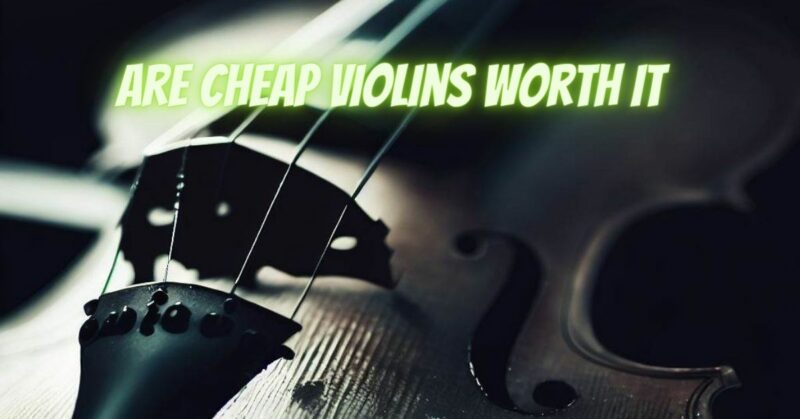The enchanting sound of a violin has enticed countless individuals to embark on a musical journey. Aspiring musicians, beginners, and budget-conscious individuals often find themselves faced with a dilemma: whether to invest in a cheap violin or save up for a more expensive instrument. In this article, we explore the pros and cons of opting for a low-cost violin and whether these affordable instruments are truly worth it.
Affordable Price, Limited Investment:
One of the primary attractions of cheap violins is their affordable price tag. For beginners or those unsure about their long-term commitment to playing the instrument, a budget-friendly option might seem like a sensible choice. Investing less in an entry-level violin allows individuals to explore their interest without significant financial risk.
Quality Concerns:
While cheap violins can be a practical choice for beginners, it is crucial to consider the quality of the instrument. Low-cost violins are often mass-produced and lack the craftsmanship and attention to detail found in higher-end instruments. As a result, the sound quality, playability, and overall durability of these instruments may be compromised.
Playability and Learning Experience:
Learning to play the violin is a delicate process that relies on the proper feel and response of the instrument. Cheap violins may have uneven fingerboards, poorly fitted pegs, and subpar bridges that can impede the learning experience. This can lead to frustration and hinder the progress of beginners.
Sound Quality:
The sound produced by a violin is central to its appeal. While some affordable violins can produce a pleasant tone, they often lack the depth, resonance, and complexity found in higher-quality instruments. A subpar sound may discourage players from fully appreciating the instrument’s potential and dampen their enthusiasm for learning and practicing.
Upgrading Difficulties:
As beginners progress and gain proficiency on the violin, they may eventually outgrow the capabilities of a cheap instrument. Upgrading to a higher-quality violin becomes essential to further their musical journey. However, selling or trading in a cheap violin might yield minimal returns, making the transition to a better instrument financially challenging.
Resale Value:
Resale value is a critical consideration for those who view the violin as an investment in their musical journey. While high-quality violins tend to retain their value over time, cheap violins may depreciate significantly. This can pose a problem if the player decides to upgrade or pursue a different instrument.
Balancing Budget and Quality:
Finding the right balance between budget constraints and instrument quality is essential. In some cases, renting a mid-range violin might offer a more viable option for beginners. Rental programs often provide access to better-quality instruments without the commitment of a purchase.
The decision of whether cheap violins are worth it ultimately depends on individual circumstances and aspirations. For casual learners and those exploring their interest in the violin, a low-cost instrument might serve as a reasonable starting point. However, serious musicians seeking to advance their skills and experience the full beauty of the violin should consider investing in a higher-quality instrument. Striking a balance between budget and quality is key to fostering a rewarding and enjoyable musical journey with the violin.

